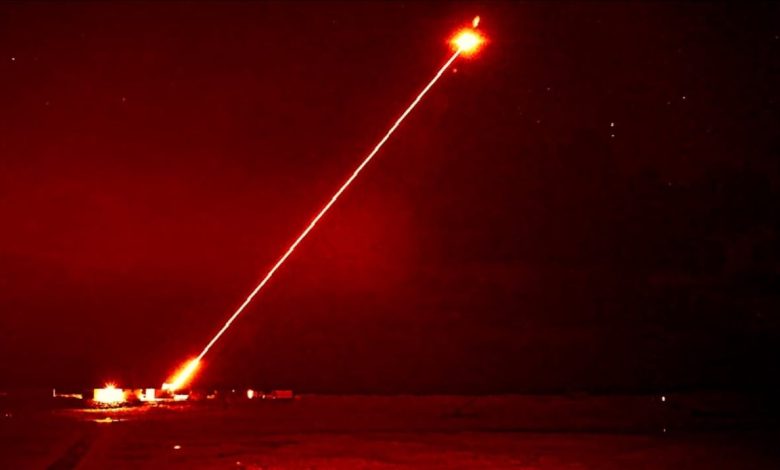UK rushes naval laser weapon, as major tank upgrade hits snag

PARIS — The United Kingdom is accelerating work on the DragonFire laser weapon, with a goal of equipping four Royal Navy destroyers with the system starting in 2027, Minister for Defence Procurement Maria Eagle said in a written response to parliamentary questions.
Meanwhile, plans to upgrade the U.K.’s Challenger main battle tank have been impacted by some delays in the supply chain, with additional resources being channeled into the program to resolve the issues, Eagle said in a response on April 1.
The British government in its Spring Statement in March announced plans to spend at least 10% of the Ministry of Defence equipment budget on new technologies such as drones and AI-enabled capabilities, and create a ring-fenced budget of £400 million ($516 million) for a defense-innovation fund.
“We are bringing laser technology to the Navy around five years faster than previously planned, which will protect our Armed Forces, and let us learn by doing,” Eagle said. “As announced in the Spring Statement, additional funding for Defence will be directed toward advancing technology including guaranteeing the in service date for DragonFire.”
Turning DragonFire into an operational capability more quickly will allow the armed forces to make continual improvements in areas like integration, software and overall lethality, the minister said. That will help develop the system itself, as well as inform the choices the MoD makes on future directed-energy weapons, according to Eagle.
DragonFire in January 2024 for the first time destroyed an aerial target with a high-powered test shot, in what the MoD called a major step forward in bringing the laser technology into service. The industry team developing the laser weapon is led by pan-European missile maker MBDA, with partners Leonardo UK and Qinetic.
The U.K. government plans to increase defense spending to 2.5% of GDP in 2027. That would translate into £14.2 billion additional spending in the 2027-2028 fiscal year compared with 2024-2025, based on the latest data from the Office for Budget Responsibility, more than the £13.4 billion announced in February, according to Eagle.
The U.K. spent an estimated £64.6 billion on defense in 2024, up from £61.9 billion a year earlier.
The ongoing plan to upgrade Britain’s main battle tank to the Challenger 3 version ran into some supply-chain hiccups, Eagle said. The upgraded tank’s initial operating capability is forecast for 2027, with all of the U.K.’s 138 Challenger 3 tanks planned to be in service by the end of 2030.
“Additional resources have been directed towards resolving these issues and the next phase of trials will start in quarter two 2025,” Eagle said. “Progress will be monitored carefully and any impact on the delivery of initial operating capability will be continually assessed.”
The upgrade is being led by Rheinmetall BAE Systems Land, with enhancements including a turret wit a 120mm smooth-bore gun, new armor and an active protection system. The approved budget for the upgrade is £1.9 billion, which includes the contract with RBSL, and there have been no increases to the total budget due to technical challenges or inflation, Eagle said.
“We are confident that Challenger 3 will continue to match potential threats throughout its lifecycle, but we will continually review the performance of its specification to ensure that it remains world-leading,” Eagle said.
Rudy Ruitenberg is a Europe correspondent for Defense News. He started his career at Bloomberg News and has experience reporting on technology, commodity markets and politics.







